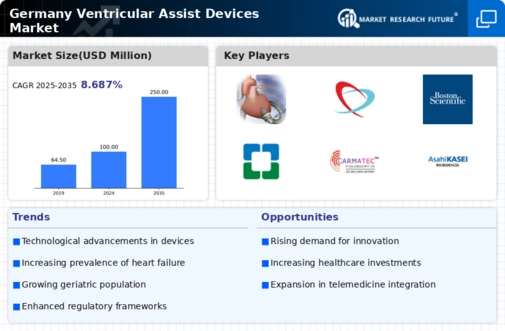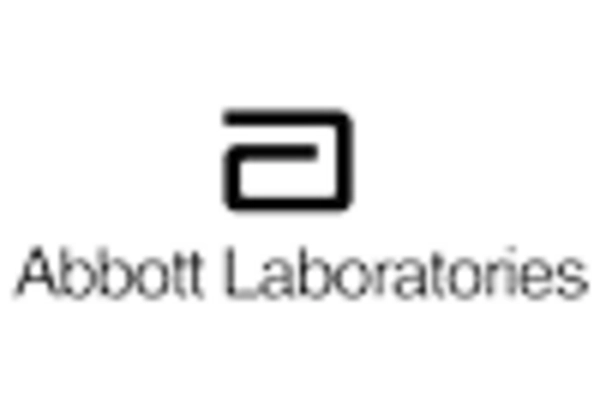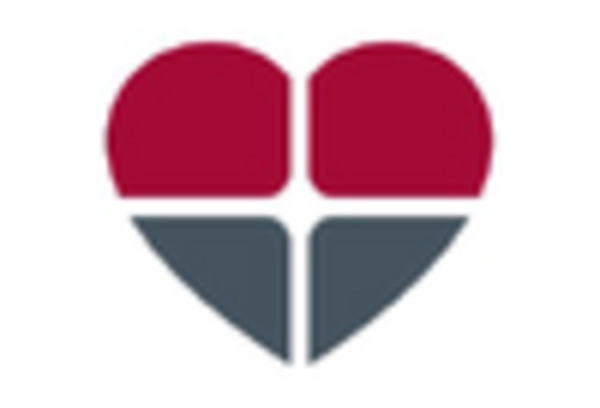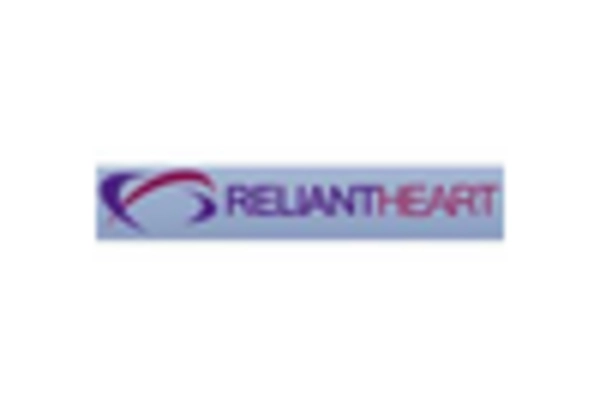Rising Healthcare Expenditure
Germany's commitment to healthcare spending is a significant driver for the ventricular assist-devices market. The country allocates approximately 11.7% of its GDP to healthcare, which translates to around €400 billion annually. This substantial investment facilitates access to advanced medical technologies, including ventricular assist devices. As healthcare budgets expand, hospitals and clinics are more inclined to adopt innovative treatment options, thereby increasing the demand for these devices. The ventricular assist-devices market stands to benefit from this trend, as enhanced funding allows for better patient care and the integration of cutting-edge technologies into treatment protocols.
Growing Awareness and Education
The increasing awareness of heart diseases and the benefits of ventricular assist devices among both healthcare professionals and patients is driving market growth in Germany. Educational initiatives and campaigns by medical associations have significantly improved understanding of heart failure management options. As a result, more patients are being referred for ventricular assist device evaluations, leading to higher adoption rates. This trend is expected to continue, with the ventricular assist-devices market likely to expand as awareness campaigns reach broader audiences, ultimately improving patient outcomes and satisfaction.
Supportive Reimbursement Policies
The reimbursement landscape for ventricular assist devices in Germany is becoming increasingly favorable, which is a crucial driver for the market. The German healthcare system provides comprehensive coverage for these devices under specific conditions, ensuring that patients have access to necessary treatments without prohibitive costs. This supportive reimbursement framework encourages healthcare providers to recommend ventricular assist devices as a treatment option for severe heart failure. As reimbursement policies evolve to include more innovative devices, the ventricular assist-devices market is poised for growth, as financial barriers are reduced and patient access improves.
Increasing Prevalence of Heart Failure
The rising incidence of heart failure in Germany is a primary driver for the ventricular assist-devices market. According to recent health statistics, approximately 1.5 million individuals in Germany are diagnosed with heart failure, leading to a growing demand for advanced treatment options. This trend is likely to escalate as the population ages, with projections indicating that by 2030, the number of heart failure patients could increase by 25%. Consequently, healthcare providers are increasingly adopting ventricular assist devices as a viable solution to manage severe heart failure cases, thereby propelling market growth. The ventricular assist-devices market is thus positioned to expand significantly, driven by the urgent need for effective interventions to improve patient outcomes.
Technological Innovations in Device Design
Innovations in the design and functionality of ventricular assist devices are transforming the landscape of the market in Germany. Recent advancements have led to the development of smaller, more efficient devices that offer improved biocompatibility and ease of implantation. For instance, the introduction of continuous-flow devices has enhanced patient mobility and quality of life. The market is projected to grow at a CAGR of 8% over the next five years, driven by these technological enhancements. As manufacturers invest in research and development, the ventricular assist-devices market is likely to witness a surge in product offerings, catering to diverse patient needs and preferences.

















Leave a Comment